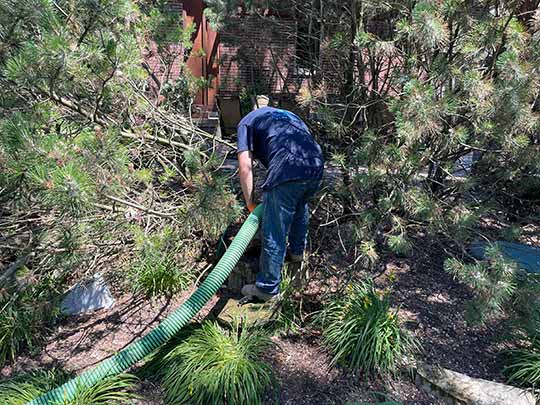
If your home is not in the city, chances are it is not connected to a sewer system but to the septic system on your property. In the absence of a sewer network, septic systems ensure that sewage is treated adequately before the wastewater is returned to the soil.
But septic systems need to be maintained if they are to function properly. Unlike wastewater treatment plants which are the responsibility of the city, your septic system is your responsibility, says Level Property Management Group. Knowing how to maintain it will help you avoid headaches.
How do you maintain the septic system on your property? This post explains the steps for caring for your septic system to avoid system failures. But before we jump into that, what are the components of a septic system, and what do those components do?
Features of septic systems and their functions
Sewage is the term for all the wastewater from your house, toilet, shower, laundry room, and kitchen. This wastewater contains liquid and solid wastes that must be broken down inside the septic system before being released into the environment.
The parts of the septic system are:
- The main sewer line or sewage entry: The pipe that transports raw sewage from your house into the septic tank.
- The septic tank is the heart of the system, responsible for primary sewage treatment. That is the separation of solids, liquids, fats, and other materials inside raw sewage. The septic tank has the following parts:
- A large tank with two chambers, separated by a partition.
- Chamber one: Raw sewage enters this tank to be separated into sludge, scum, and effluents. Sludge consists of solids; sludge settles at the bottom of the tank. Scum is everything that should not enter the system but somehow finds its way into it. Scum floats to the top of the tank. Between scum and sludge is a clear zone filled with liquid.
- An opening can be found halfway on the partition, above the sludge layer, and beneath the scum. It ensures that only the effluents in the first chamber flow into the second. Effluent is the name for the liquid exiting the septic tank.
- Chamber two: Once inside this tank, the effluent makes its way through a baffle to leave the septic tank through the treated wastewater exit and flow onwards to the distribution box.
- Distribution box: It ensures the even distribution of the effluents from the septic tank into the various channels of the drain field.
- Leach field (sometimes called a drain field): The leach field consists of a series of perforated pipes (channels) within a trench filled with stone, gravel, or crushed rock and soil on top of them. Effluents entering these pipes permeate through the holes into the drain rock surrounding the channels. From there, wastewater trickles into the ground to be further broken down by soil bacteria before it finally finds its way into groundwater.
How to maintain your septic system
Just like the other systems in your home, the septic system needs proper maintenance. To keep your septic system in the best possible health, you should do the following:
Know the location of all the components of the system
You can get this information from the records. Knowing the location of those components will let you act quickly during emergencies. It also keeps the components from being accidentally damaged.
Limit the use of the garbage disposal
Garbage disposals are a convenient way to get rid of food waste, but those ground-up particles can clog the septic system’s components. Instead of a garbage disposal, you can try to compost.
Do not overload the septic tank
Water from your laundry can overwhelm the septic tank. Water can flow too quickly through the septic tank to let the solids in the wastewater settle. To avoid this issue, space out your laundry.
Beware of household cleaners
Anti-bacterial soaps, chemical drain cleaners, bleach, and liquid fabric softeners can harm your septic system by killing beneficial bacteria or altering the tank’s chemistry.
Install an outlet baffle screen
This will protect the drain field by removing particles that may clog drain field pipes and soil.
Do not flush fats, oils, and grease (FOGs) into the drain
Septic systems are not designed to handle FOGs. Over time, the scum created by greases can accumulate to a point where it overwhelms the system.
Do not put these into your drain
Cigarette butts, paper towels, baby wipes, feminine sanitary products, pharmaceuticals, paint thinners, insecticides, chemical solvents, and kitty litter.
Have the tank inspected and pumped on a schedule
The EPA recommends that septic systems be pumped and inspected every three years (or earlier if your municipality requires that).
Do not drive over the leach field
Driving vehicles or heavy equipment over the leach field can damage drain field pipes and compact the soil. You also don’t want to dig in the drain field.
